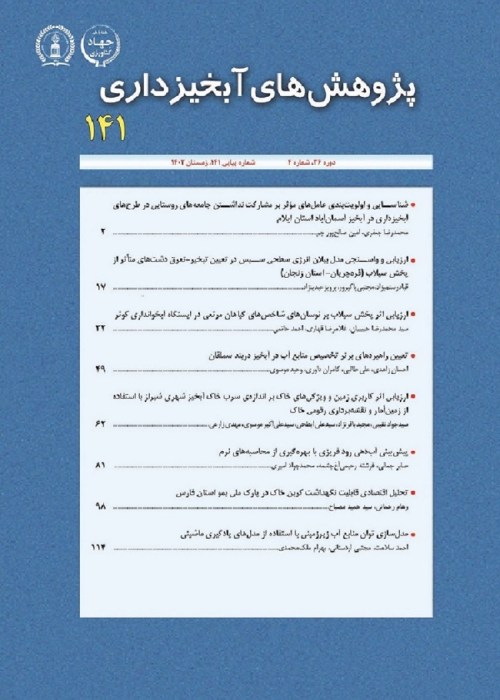Determination of Effective factors and Assessment of Landslide Susceptibility Using Random Forest and Artificial Neural Network in Doab Samsami Region, Chaharmahal va Bakhtiari Province
Nowadays, landslides are among the geological hazards that data mining methods based on machine learning have been developed to model and predict. This paper addresses the development of a landslide susceptibility assessment that uses machine learning techniques and GIS. Artificial Neural Network (ANN) and Random Forest (RF) were compared for the landslide spatial modeling. The landslide susceptibility zoning maps consider 15 layers including geologic, morphologic, hydrologic, man-made parameters (independent variables) for landslide susceptibility assessment, and Doab Samsami watershed in Chaharmahal Bakhtiari province was chosen for the application of models due to data availability and the 174 total landslide occurrences (dependent variables). The relationship between effective factors and landslide occurrences was quantified and weighted using frequency ratio. Data independence was tested using linear multivariate regression analysis, tolerance, and VIF indices. In order to implement and validate the model, the landslide locations were randomly divided into two subsets, namely, training (70% of the total) and testing (30%), respectively. Subsequently, RF and ANN models were developed and the landslide susceptibility zonation map was produced. Maps were evaluated and validated using frequency ratio & seed cell area index, success rate, area under of receiver Operating characteristic (AUC-ROC). Results illustrated that the two factors of slope length and topographic wetness index have multicollinearity or information overlap and were removed from the modeling process in later stages. Effective factor analysis in both models showed that lithology, land use, and aspect slope factors had a significant effect on landslides, respectively. Also, the results of classification and validation of models showed that the random forest (RF) model (AUC-ROC = 0.919) was more accurate and efficient than the artificial neural network (AUC-ROC = 0.845) for landslide occurrence prediction. The results of this study can be used by executive administrations for management and planning in development and executive plans, including rural-urban development, accurate estimation in erosion models in watersheds, soil conservation, and natural resources protection.
- حق عضویت دریافتی صرف حمایت از نشریات عضو و نگهداری، تکمیل و توسعه مگیران میشود.
- پرداخت حق اشتراک و دانلود مقالات اجازه بازنشر آن در سایر رسانههای چاپی و دیجیتال را به کاربر نمیدهد.



